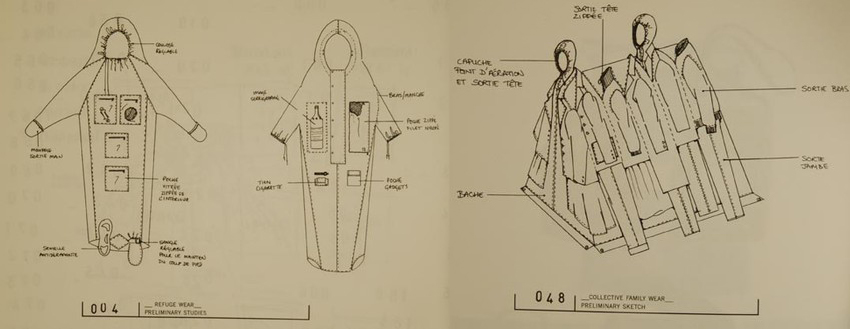Trying to wear a “three dimensional” dress is not only a stylistic challenge but also architecture. Fashion and architecture seems to have penetrated to a field of another, as the need to create space and covering the body is a common goal. The cloth in architecture acquires different dimensions. Become shell, space, house, and clothing refuge of the human body. These garments refuge, with appropriate mechanisms and structures, converted, surround selectively the body, according to traveling conditions and environmental conditions.
Defy the conventional and standardized methods and the aesthetic of clothes while ensuring selective apparel, minimal, necessary, primary. The suit after the naked body of a traveling nomad, and the defined space between the bodies the fabric and the external environment, are the second skin. These “structures” will allow a level of mobility and flexibility, with opportunities for clustering, adding, disseminated, grouped and canceled in the city and gives a character of a non-permanent, temporary installation. Folds, sheathes, wrinkles and creases give to the user the possibility of determining the shell as an expression of personal property. One garment that the owner decides what will cover and what will show. Simultaneously giving to the city a changing and flexible system. The scale of the design approaches more and more to human body. These ‘’constructions’’ will make a strong human presence in public space. The mobility of individuals as a consequence of market globalization and the blending of cultures is a phenomenon particularly noticeable in modern cities that have been converted multi-cultural cities.
Lucy, Orta. 1996. Refuge Wear.UK, London

